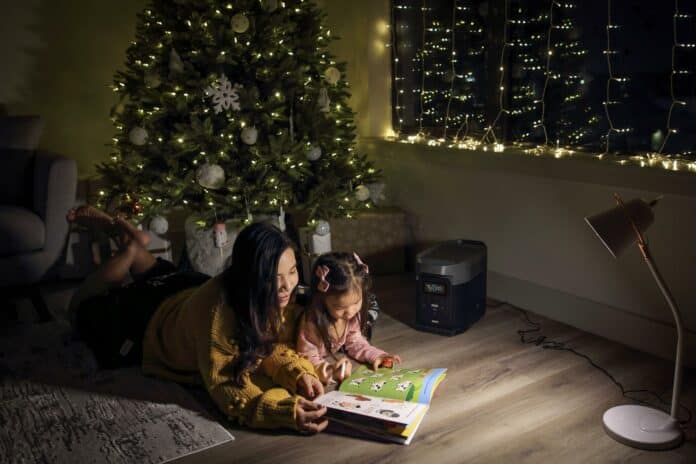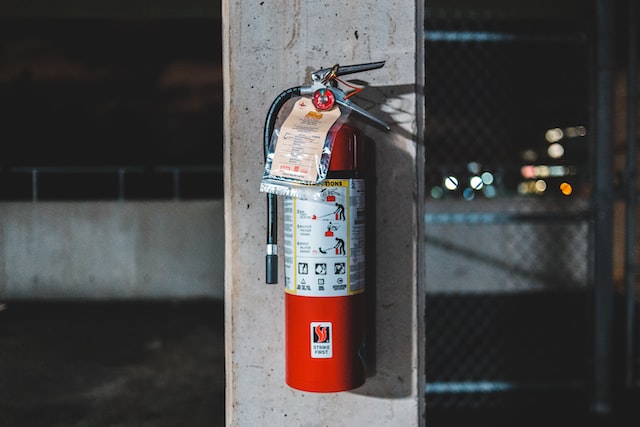- What Is the Process of Winterizing?
- When Should You Start Winterizing Your House?
- Preparing Your Home for Winter Weather
- Powering Your Home in the Winter
- Keeping Your Home Warm and Comfortable
- Managing Potential Hazards in Your Home
- Maintaining Your Home During the Winter
- Frequently Asked Questions
- Final Thoughts
As temperatures start to drop, it’s the perfect time to think about winterizing your home. In colder climates, winterization isn’t just an option—it’s a crucial part of home maintenance that enhances safety, protects your property, and helps you save money on heating bills.
Winter can be tough on homes, especially during extreme weather events. From heating systems struggling to keep up with freezing temperatures to power outages caused by storms, your home faces many challenges. But with proper preparation, you can stay warm, safe, and energy-efficient all season long.
What Is the Process of Winterizing?
Winterization means thoroughly preparing your home for frigid temperatures, high winds, and precipitation like snow, hail, and icy rain.
There are many reasons to winterize your home, including saving on electricity and heating bills by portable power station and preventing water pipes from freezing.
You can handle many aspects of home winterization yourself, but it may make sense to hire a home inspector to make sure you’ve covered every angle.
Whether your home is new or old, it’s always a good time to ensure it’s prepared for extreme weather events and icy cold temperatures.

When Should You Start Winterizing Your House?
To maximize the benefits of home winterization, you should begin the process before temperatures drop below about 50°F (10°C).
Depending on what region of the United States you live in, you should aim to complete your winterization by early to mid-autumn. Don’t wait until a winter storm arrives or you have to turn on the heat to winterize your home.
You’ll be letting money fly out the windows and cracks in your house by wasting it on heat and electricity bills.
Preparing Your Home for Winter Weather
You can get the jump on cold weather by adequately preparing your home for winter. Here are the steps you should take:
Protecting Your Home From the Elements
Winter weather can be vicious, with snowstorms, ice, and extreme cold often causing havoc. There’s nothing we can do to prevent winter weather, but you can prepare for the elements and keep your family and property safe.
In many regions, the three most destructive elements of winter are snow and ice accumulation, high winds and blizzards, and extreme cold. Each of these can impact everything from your heating and plumbing to your electricity and water supply.
Checking and Maintaining Your Heating System
When thermometers begin to plummet, the last thing you want is an ill-maintained heating system. It’s vital to check and maintain your system with portable solar generator before and throughout the winter months. You should always have your heating system serviced once a year at minimum. It makes good sense to schedule an inspection before winter strikes.
Check thermostats, radiators, and timers throughout the home to be sure they’re all working correctly before the winter storms arrive. If you rely on space heaters or a fireplace for additional heat, ensure they’re in good working order.
Preparing Your Plumbing for Freezing Temperatures
Frozen pipes, or even worse, burst pipes, are the last thing you need in winter, so it certainly pays to give them some extra attention.
Most newly installed plumbing systems should already include good-quality insulation, but older systems may need an upgrade. The most at-risk pipes run through unheated areas, often exterior walls or garages. You’ll want to insulate these to prevent freezing.
During extreme cold, you can also help prevent damage to your pipes by keeping a small amount of water running at all times.
Powering Your Home in the Winter
When a severe winter storm hits, even long-established infrastructure can be badly affected, as seen in the Texas power outage in February 2021.
Severe power outages during the coldest months can be deadly, especially if you’re unprepared. With more extreme weather events placing a strain on our often over-burdened electricity grids, preparing your home for blackouts is a critical part of winter preparedness.
Investing in a portable solar panel can ensure sufficient backup power for your home. It makes sense not only during winter but year-round to protect against power outages and failing grid infrastructure.
If you want energy independence or decreased reliance on the grid, consider going solar. EcoFlow DELTA solar generatorsprovide a reliable source of renewable electricity that you can charge and have ready to go using the sun’s power, no matter the season.
A whole-home backup power solution offers the ultimate in power security and takes winterizing your home to the next level.
Keeping Your Home Warm and Comfortable
Maintaining a snug and comfortable environment isn’t always easy with low temperatures and raging winds looking to penetrate every nook and cranny of your home.
Insulating Your Home
Let’s be honest. The quality of building methods and the materials used can vary dramatically and significantly impact your home’s resistance to cold. Upgrading your home’s insulation is one of the best ways to stay safe and warm—and lower your utility bills.
Windows and doors are an excellent place to start. Consider insulating them, especially if you don’t have double or triple-paned windows. Thick drapes or curtains will also add an extra barrier against the cold outside.
With your internal and external doors, make sure that they close tightly and that there aren’t any between the door and frame. If there are, consider using draft stoppers and installing foam insulation around the door.
If you have an attic, your home can see as much as 25% heat loss if it’s poorly insulated. Insulation is relatively inexpensive to purchase and install. You’ll earn the cost back in savings on your utility bills in no time.
Sealing Drafts and Leaks
As mentioned above, windows and doors are among the worst offenders for letting in cold air. Besides insulation, you’ll want to identify any leaks or cracks that make your home drafty.
If you have double-paned windows and still find they’re letting in cold air, it’s probably coming in through small gaps around them.Window caulking is an easy and cost-effective way to plug those leaks.
Chimneys are often the most overlooked entry point for cold air into the house. When not using your fireplace, close the chimney’s flue or purchase a draft-blocking balloon that inflates inside the chimney to block any cold air from entering.
Using Space Heaters Safely
Space heaters can be excellent sources of auxiliary heat during the cold months, but improper use can make them hazardous.
Never place any clothing or blankets on top of a heater because it creates a fire risk. Follow the three-foot rule and give your space heaters plenty of room with power station. You must keep space heaters far away from anything flammable.
Avoid using extension cords or power strips with space heaters, as these can overheat and start a fire. Also, place the space heater on a level surface where it won’t fall over.
Lastly, and perhaps most obviously, keep kids and pets away from space heaters and turn them off when you can’t monitor them.


Managing Potential Hazards in Your Home
Potential hazards exist in the home throughout the year, but winter requires extra precautions.
Carbon Monoxide and Smoke Detectors
According to the National Fire Protection Association, smoke detectors reduce the risk of fire-related fatalities by 55%. Check your smoke detectors routinely to reduce the risk of fires from heating appliances and fireplaces.
Carbon monoxide poisoning accounts for at least 430 deaths across the United States each year. Its odorless and colorless properties make it virtually impossible for humans to notice. Carbon monoxide detectors are an absolute must for every home. We recommend testing both smoke and carbon monoxide detectors monthly.
Fire Prevention and Safety
The winter months see the highest number of home-related fires across the United States, with roughly 45,000 electrical fire soccurring during this period. Space heaters account for 44% of these fires, making them the most likely cause of a fire in the home during winter.
Keeping a close eye on space heaters in your home is the best place to start with fire prevention. But plenty of potential fire risks tend to worsen during the winter months. Candles look lovely, but never leave them unattended, and certainly never overnight. Candles are responsible for 2% of home fires in the US.
Also, be aware of your Christmas tree. One in five Christmas tree-related fires is because of a heat source left too close to the tree. Lights overloading a power source are another potential fire risk.
Maintaining Your Home During the Winter
Assessing your home’s winter readiness before the cold weather hits is always a good idea, but maintaining a safe dwelling through the winter months is also vital.
Clear Snow and Ice From Sidewalks and Driveways
Snow and ice build up on sidewalks or your driveway can be dangerous for your home and anyone in the vicinity. If you regularly use your driveway, you’ll need to keep it clear and accessible the best you can. It’s not uncommon for cars to slide out of control on a driveway just when you think you’re home and dry.
Frozen sidewalks are another potential hazard—the risk of falling increases in winter, especially for the elderly. Do yourself and your neighbors a favor. Clear and salt your sidewalks and driveway.
Protect Your Roof and Gutters
Your roof and gutters may not be the most visible parts of your home, but they certainly shouldn’t be ignored.
If you can, clean your roof and remove the accumulated snow, but don’t take unnecessary risks. Should you feel it’s a little out of your depth, there’s no shame in calling in a professional. Navigating an icy roof in the middle of winter is not for the faint-hearted and is generally not worth the risk.
Walk around your home weekly and check whether leaves and other debris have built up in your gutters. Clogged gutters can not only cause water damage when liquid can’t flow away naturally but also a potential fire risk.
On the other end of the spectrum, you’ll also want to watch for ice forming inside gutters and downspouts that can eventually crack, causing them to come away from the wall.
Keeping Your Home Clean and Well-Ventilated
Keeping your home clean during winter isn’t just about aesthetics. It’s more about reducing risks, particularly fire risks. Lots of junk lying around has the potential to become a hazard in a fire and can even help cause one.
Ventilation is another crucial point and one that homeowners often overlook when the temperatures dip below freezing. It can be tempting to close every door and window until the appearance of spring, but air quality is crucial for humans.
Opening a door or window for five to ten minutes will allow a healthy blast of air to circulate through the room. Fans and air purifiers can be viable alternatives. It may be shockingly cold outside, but subjecting your family and yourself to stale air for days or weeks on end does nobody any good.
Protecting Your Pipes
Winter can play havoc on the piping around your house, and taking the appropriate steps to maintain your system throughout the coldest months is essential. Much of the work starts before winter by ensuring you have the correct level of insulation, but once the temperature plummets, you’ll want to keep a close eye on your pipes.
Allowing a small amount of water to run continuously through the pipes—even just atrickle—will help to prevent your pipes from freezing.
Also, consider keeping your kitchen and bathroom cabinets open to allow warm air to circulate. Maintain your thermostat at the same level day and night when temperatures are particularly low. It may add a little to your energy bill but repairing burst pipes will cost significantly more.
Keep Your Heating System Well-Maintained
Your heating system is your lifeblood during the coldest months, and it certainly pays to keep it well-maintained.
Furnaces and boilers work hard in winter, so it’s always worth checking them periodically. You should hire a professional to conduct a routine inspection on anannual basis, but a quick check of the venting system and heat exchange to ensure that there isn’t a build-up of water or excess dirt is always a good idea.
You’ll also want to keep a carbon monoxide near the furnace or boiler and test it regularly, as harmful gasses can sometimes build up near heating systems.
Frequently Asked Questions
Q1: How do I winterize the outside of my house?
A1: To winterize the outside of your house, seal gaps around windows and doors, clean gutters, insulate outdoor faucets, and check your roof for damage. Don’t forget to protect your power supply—installing a whole home generator ensures you have reliable backup electricity during winter storms or outages.
Q2:What Needs To Be Done to Winterize a House?
A2:If you’re going to winterize your home DIY-style, the first thing to do is assess all the points of entry for cold air coming into your home. If you want to hire a professional, you should do so in mid-summer at the latest, as home inspectors and contractors experience a huge increase in demand as winter approaches. Weatherproof windows and doors, clean your gutters and protect your pipes before the year’s first frost.
Q3:What Happens if a House Is Not Winterized?
A3:If you live in a cold weather state and you fail to winterize your home, you’ll be letting your hard-earned money fly out the windows (and doors) of your house. Neglecting insulation, the weatherproofing of doors, windows, and chimneys, protecting your pipes, and cleaning your gutters can be extremely costly mistakes. It may even put your family at risk in a blizzard or other extreme winter weather event.
Final Thoughts
Winter can be harsh, but with the right preparations, you can enjoy a safe, warm, and cost-efficient home throughout the season.
Don’t forget to invest in a backup power solution to stay prepared for potential outages. A solar generator can even help lower energy costs by reducing reliance on the grid.
EcoFlow offers high-quality portable power stations and solar generators to keep your home running smoothly, no matter the weather. Start preparing today—shop EcoFlow’s winter-ready power solutions now!


